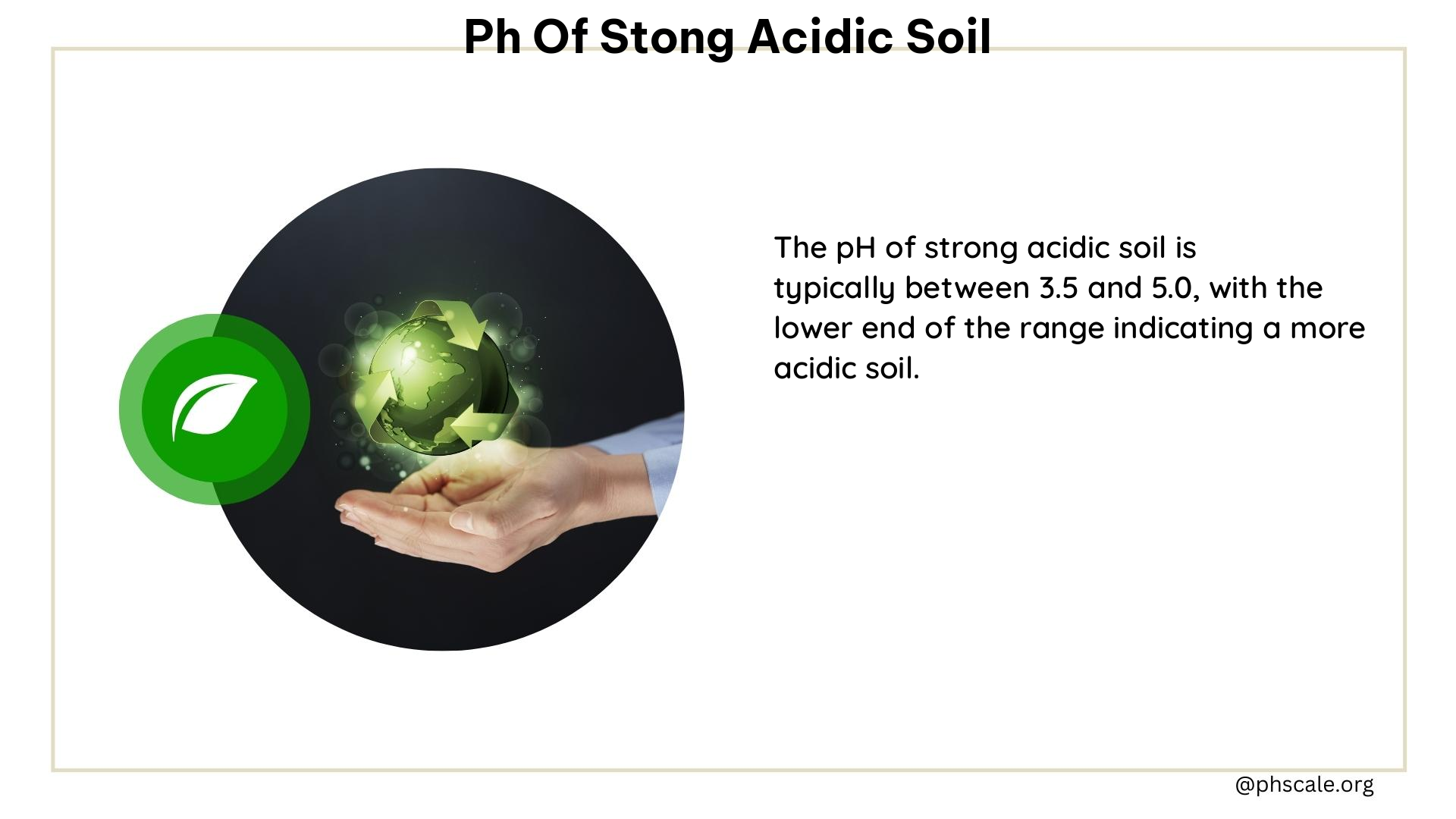The pH of strong acidic soil falls within the range of 5.1 to 5.5, a level that can significantly impact plant growth and nutrient availability. This type of soil is characterized by its low pH, which is the result of various factors, including rainfall, root respiration, decomposition, and the use of certain fertilizers. Understanding the characteristics, causes, and effects of strong acidic soil is crucial for gardeners, farmers, and land managers who want to ensure the health and productivity of their land.
Characteristics of Strongly Acidic Soil
Strong acidic soils are defined as those with a pH range between 5.1 and 5.5. This level of acidity can have a profound impact on the chemical reactions and nutrient availability within the soil, affecting the growth and development of plants.
| Characteristic | Description |
|---|---|
| pH Range | 5.1 – 5.5 |
| Description | Strongly acidic soils have a significantly lower pH than the neutral level of 7, which can affect plant nutrient availability and influence chemical reactions in the soil. |
Factors Contributing to Strongly Acidic Soil

Several factors can contribute to the development of strongly acidic soil, including:
-
Rainfall: Average rainfall has a pH of around 5.6, which can lead to the leaching of basic cations from the soil, making it more acidic over time.
-
Root Respiration and Decomposition: Microorganisms release carbon dioxide during the decomposition of organic matter, increasing the concentration of carbonic acid and subsequent leaching, which can acidify the soil.
-
Fertilizer Use: The use of ammonium-based fertilizers can react in the soil to form nitrate, releasing hydrogen ions and contributing to soil acidification.
Effects on Plant Growth
The low pH of strongly acidic soil can have significant impacts on plant growth and development, including:
-
Nutrient Availability: Strongly acidic soils can limit the availability of certain essential nutrients, such as phosphorus, calcium, and magnesium, leading to deficiencies and poor plant growth.
-
Toxicity: High levels of manganese and aluminum can become toxic to plants in strongly acidic soils, causing stunted growth, leaf discoloration, and other problems.
Methods for Determining pH
Accurately determining the pH of soil is crucial for understanding and managing strongly acidic conditions. There are several methods that can be used to measure soil pH:
-
Observation of Soil Profile: Poor incorporation of an organic surface layer with the underlying mineral layer can be an indicator of strongly acidic soils.
-
pH Testing Kits: Inexpensive pH testing kits can be used to quickly and easily determine the pH of a small soil sample.
-
Electronic pH Meters: Commercially available electronic pH meters can provide more precise measurements of the pH of moistened soil or a mixture of soil and water.
Balancing pH
Adjusting the pH of strongly acidic soil is essential for improving plant growth and nutrient availability. Two common methods for balancing the pH include:
-
Limestone: Adding limestone to the soil can help raise the pH, making nutrients more available to plants.
-
Sulfur: While sulfur can be used to lower the pH of alkaline soils, it is not typically used to further acidify strongly acidic soils.
Contaminants and Chemicals
Strongly acidic soils can also be associated with the presence of certain contaminants and chemicals that can be harmful to plants, including:
-
Aluminum: High levels of aluminum can become toxic to plants in strongly acidic soils, leading to stunted growth and other problems.
-
Manganese: Elevated levels of manganese can also become toxic to plants in strongly acidic soil conditions.
Home Remedies and Alternatives
In addition to the more traditional methods of balancing soil pH, there are also some home remedies and alternative approaches that can be used to manage strongly acidic soils:
-
Organic Matter: Adding organic matter, such as compost or well-rotted manure, can help neutralize the pH of strongly acidic soils and improve overall soil health.
-
Natural Fertilizers: Using natural fertilizers like fish emulsion or bone meal can help reduce the acidity of the soil while providing essential nutrients to plants.
By understanding the characteristics, causes, and effects of strongly acidic soil, gardeners, farmers, and land managers can develop effective strategies for managing this challenging soil type and ensuring the long-term health and productivity of their land.
References
- Soil Ecology Wiki. (2023). Soil pH. Retrieved from https://soil.evs.buffalo.edu/index.php/Soil_pH
- Fine Gardening. (n.d.). The Four Things You Need to Know About Soil pH. Retrieved from https://www.finegardening.com/article/the-four-things-you-need-to-know-about-soil-ph
- Penn State Extension. (2023). Understanding Soil pH. Retrieved from https://extension.psu.edu/understanding-soil-ph
- Wikipedia. (n.d.). Soil pH. Retrieved from https://en.wikipedia.org/wiki/Soil_pH
